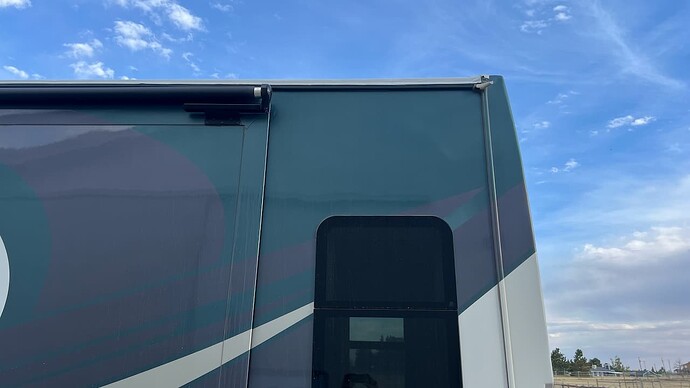I thought I’d share a different option of sealing the RV roof from the traditional frequent reapplication of lap sealant.
As it’s getting near winter time here in Colorado (snow forecast next weekend), I was researching alternatives to the standard lap sealant being applied (and according to the manual silicone). I chose to use Eternabond tape for sealing the front & rear cap transitions as well as the edges. I’d seen a number of videos and articles mentioning Eternabond as a good alternative that can outlast the typical sealants. When properly applied it can last 20+ years.
I used the following steps in the process:
- Thoroughly clean the roof
- Remove any existing silicone based sealants
- Carefully apply the tape
The first step in the process was to ensure the roof is clean. I used Simple Green to clean the roof along with a soft bristle drill brush to agitate it and remove the built up dirt. I think it did a pretty decent job.
Starting at the front and working my way back to the ladder.
After I finished cleaning the roof it was time to start removing the old silicone that was in place along the roof edges. That was a slow process working down each side. Once it was all removed, I went back and used Goo Gone to remove any residual silicone and final clean of those edges using Simple Green again.
Scraping off the silicone being careful to not tear the roof membrane.
During the process I noticed that the screw channel running down both sides attaching the roof was missing the trim cover. I purchased 100’ of trim cover and installed that prior to applying the tape.
Screw channel missing the trim (along with the spots of peeling silicone)
New trim installed
The last step was to slowly apply the Eternabond tape. I used one roll of 4" x 25’ cut to length to apply of the front and rear cap transitions last year to test it out. It held up quite well, which helped in deciding to do the roof sides. For the sides I used two 2" x 50’ rolls which allowed for no breaks in the tape. Once finished applying it’s a good idea to use a roller to press down the tape to insure a good seal and getting it into any corners.
Here’s a few pics of the before and after.
Before (you might be able to zoom in and see the old peeling silicone)
After
After (full length shot)
I’m pretty pleased on how it turned out and not having to worry about those roof seams leaking. I think it even looks better than it did originally, even though it’s not real easy to see from the ground.
I’ll still be using the lap sealant on the roof penetrations (vent fans, skylight, etc.)
as those may require replacing in the future and it’s a lot easier to remove the lap sealant than it would be to remove the Eternabond.
Just another option for those that might be interested.
Stuart








